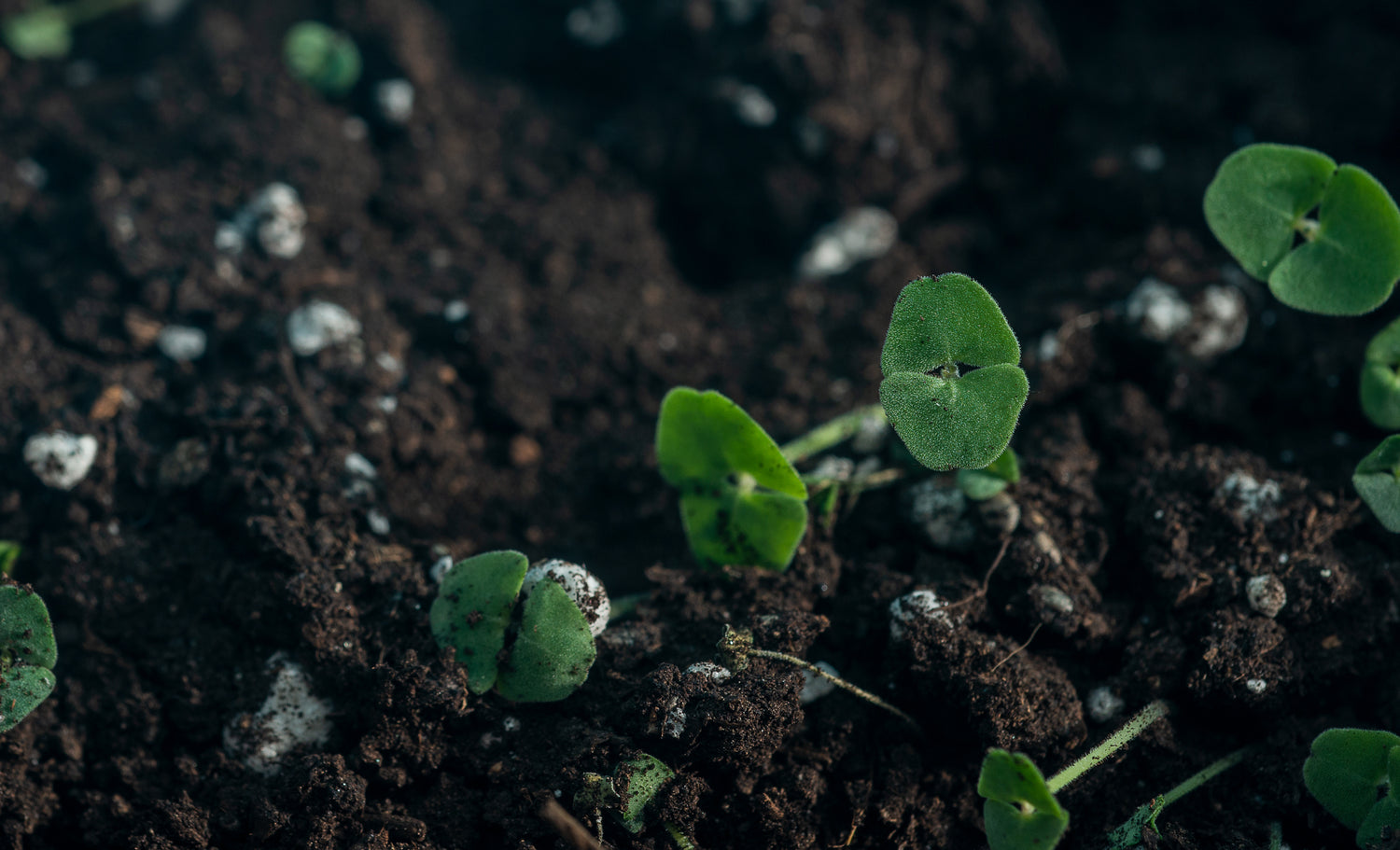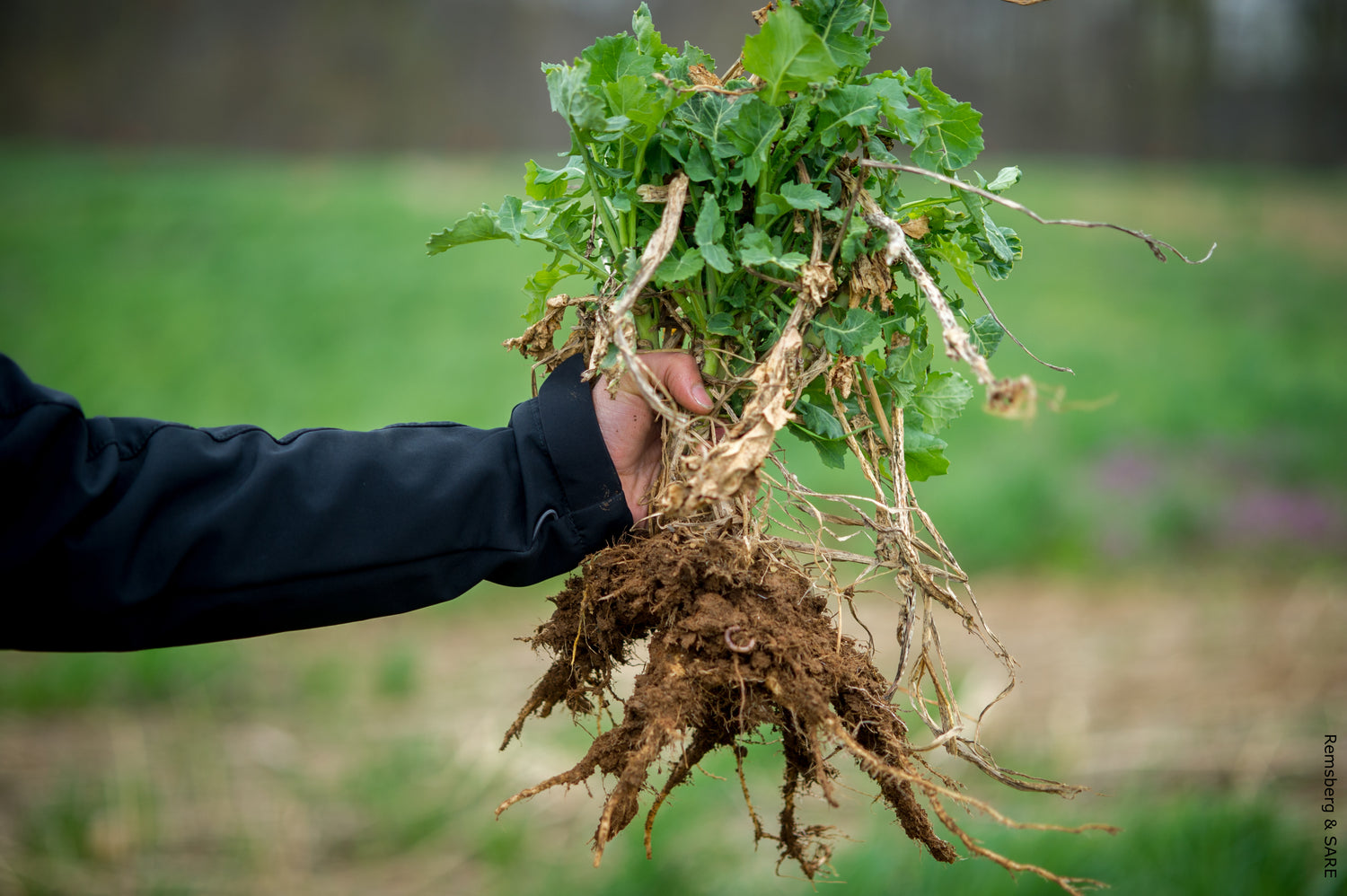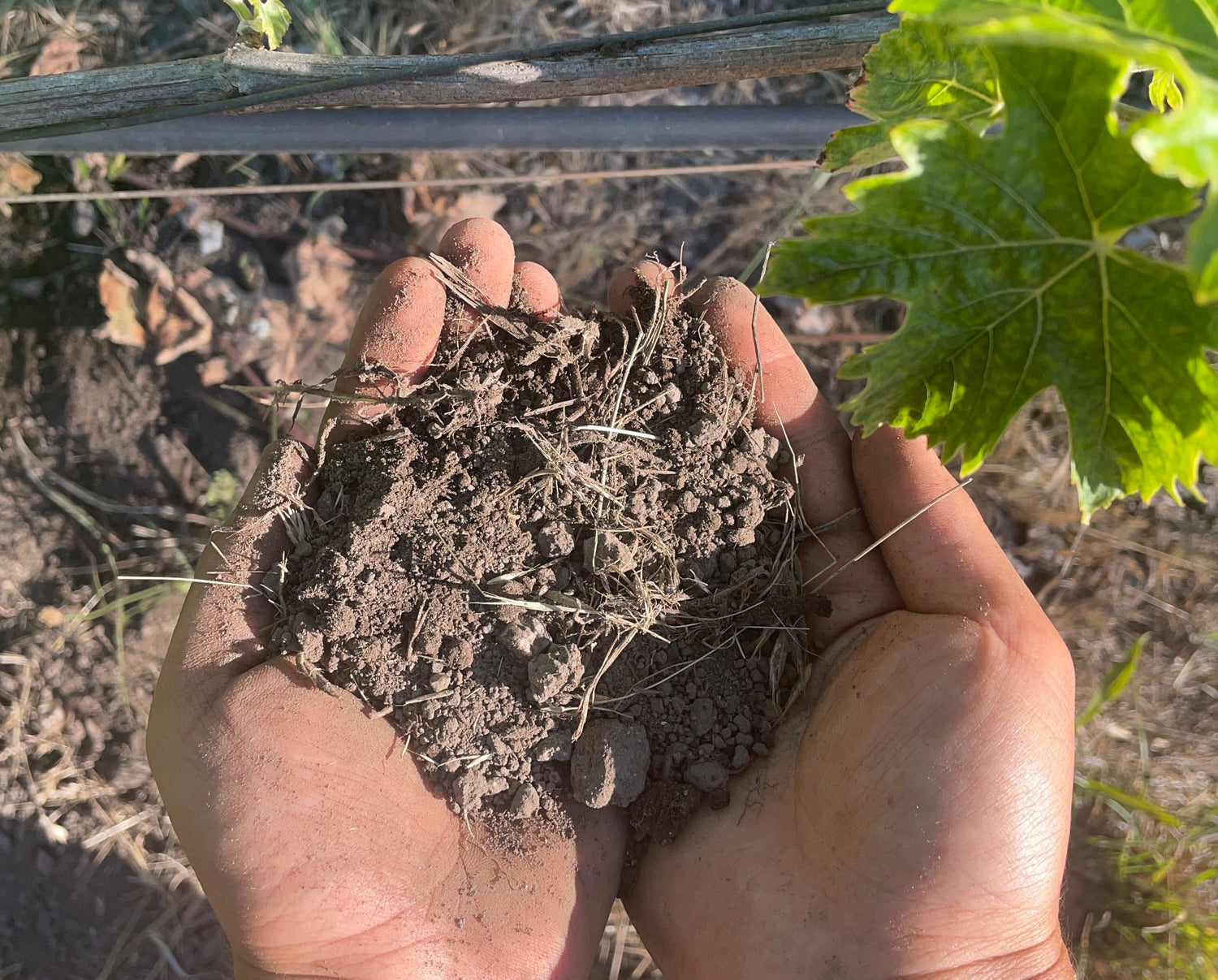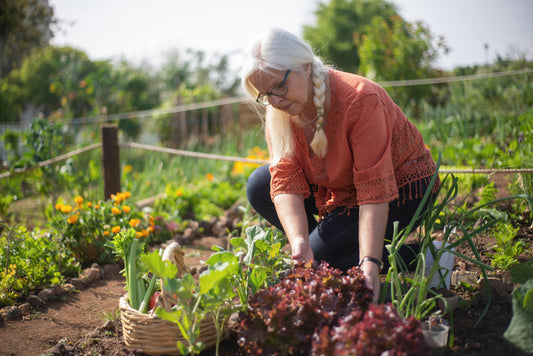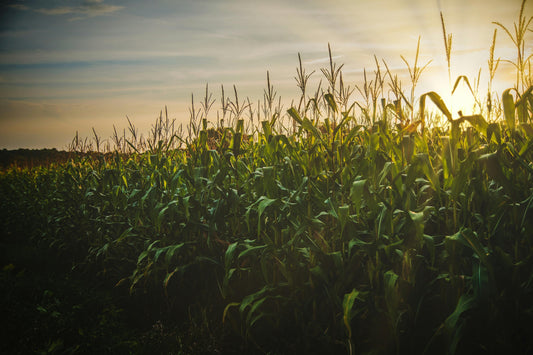North America's agricultural foundation faces unprecedented challenges as climate change accelerates soil degradation across the continent. From the Great Plains to the Atlantic Coast, shifting weather patterns are fundamentally altering soil health, threatening food security and ecosystem stability for millions.
How Climate Change is Transforming North American Soil: 50+ Critical Facts and Statistics
Climate change is driving catastrophic soil loss across North America, with the Midwest alone losing 57.6 billion metric tons of soil over 160 years while extreme precipitation events increase erosion rates by up to 21% in vulnerable regions.
Massive Soil Erosion Accelerating Across the Continent
The scale of soil loss across North America reveals the devastating impact of climate change on our most fundamental agricultural resource. Current data shows erosion rates far exceeding natural soil formation, creating an unsustainable trajectory for food production.
National soil erosion statistics paint a stark picture: Average soil erosion rates across the United States reach 4.63 tons per acre annually, representing a staggering 1.70 billion tons of total soil loss each year. This massive erosion translates to an economic impact of $12.75 billion annually at minimum topsoil replacement costs, equivalent to 25% of the entire US soybean crop value.
The Midwestern United States faces particularly severe challenges. Soil erosion rates in the Midwest average 1.9 millimeters per year since farming began over 150 years ago, nearly double the 1 millimeter per year rate the USDA considers sustainable. This has resulted in the catastrophic loss of 57.6 billion metric tons of soil across the entire Midwest region.
| Climate Scenario | Projected Erosion Increase | Economic Impact (USD) | Additional Land Demand |
|---|---|---|---|
| Sustainability (RCP2.6-SSP1) | 30% | $216 billion total | 167,000 km² |
| Middle of the Road (RCP4.5-SSP2) | 48% | $420 billion total | 167,000 km² |
| Fossil Fuel Development (RCP8.5) | 66% | $625 billion total | 167,000 km² |
Climate projections indicate worsening conditions ahead. Under current conservation practices, future climate scenarios predict an 8% to 21% increase in soil erosion across different climate change pathways. The baseline erosion model estimates current rates at 2.32 million grams per hectare annually, with climate change driving these rates significantly higher. Research published in Earth's Future indicates that global soil erosion rates could increase by 30% to 66% by 2070, with the ratio of erosion increase to annual rainfall increase being approximately 1.7.
Climate-Driven Changes in Precipitation Patterns
Shifting precipitation patterns represent one of the most visible impacts of climate change on North American soils. These changes manifest through both extreme rainfall events and prolonged drought periods, each creating unique challenges for soil conservation.
Extreme precipitation events are becoming dramatically more frequent: Nine of the top 10 years for extreme single-day precipitation events have occurred since 1995. The Northeast has experienced a 62% average increase in events with more than 3 inches of daily precipitation between 1958 and 2018, while events exceeding 5 inches daily increased by 103%.
Future projections suggest even more dramatic changes. By 2100, very extreme precipitation events exceeding 150 millimeters daily may be six times more likely than in the early 21st century under high-emission scenarios. The frequency of extreme precipitation defined as the top 1% of daily precipitation is projected to double by the end of the 21st century.
Regional variations create complex patterns: The northeastern and northwestern United States face strong increasing trends in rainfall erosivity, while the Midwest and Southwest experience weaker or inconsistent trends among climate projections. Catchments in Ohio, Maryland, Indiana, Vermont, and Illinois show mean erosion vulnerability scores above 0.08, indicating high susceptibility to climate-driven soil loss.
Soil Temperature Increases and Ecosystem Disruption
Rising soil temperatures across North America are fundamentally altering belowground ecosystems and soil processes. These changes affect everything from microbial activity to organic matter decomposition, with cascading effects on soil health and agricultural productivity.
Temperature increases drive accelerated soil processes: Climate warming particularly affects winter conditions, leading to fewer days when soil remains frozen and more precipitation falling as rain rather than snow. This shift extends the active decomposition season and increases the rate of organic matter breakdown.
Soil temperature monitoring across the North Central United States using the USDA's SCAN network reveals consistent warming trends. The Soil Climate Analysis Network tracks soil temperatures at multiple depths across over 200 agricultural stations, documenting systematic increases that correlate with regional climate change patterns.
Projected changes in soil moisture regimes indicate significant shifts: Areas in Arizona and New Mexico face projections of drier soils, along with the central and southern Great Plains. Conversely, northeastern Montana, southern Alberta and Saskatchewan, and many big sagebrush regions expect increasing soil moisture, creating a complex patchwork of changing conditions across the continent.
Soil Organic Matter and Carbon Cycling Disruption
Climate change profoundly affects soil carbon storage and organic matter dynamics across North America. These changes impact soil fertility, structure, and the critical role soils play in global carbon cycling.
Soil carbon represents a massive global reservoir: Terrestrial ecosystems contain approximately 3,170 gigatons of carbon, with nearly 80% (2,500 gigatons) stored in soil. This soil carbon pool is 3.1 times larger than the atmospheric carbon pool of 800 gigatons, making soil carbon dynamics crucial for climate regulation.
| Carbon Pool | Amount (Gigatons C) | Climate Sensitivity | Response to Warming |
|---|---|---|---|
| Soil Organic Carbon (Total) | 1,550 | High | Accelerated decomposition |
| Soil Inorganic Carbon | 950 | Low | Minimal direct response |
| Particulate Organic Matter (Surface) | Variable | Very High | Rapid loss under warming |
| Mineral-Associated Organic Matter | Variable | Low | Texture-dependent response |
| Atmospheric Carbon | 800 | High | Increases with soil carbon loss |
Research indicates that soil organic carbon comprises 1,550 gigatons globally, with the remainder existing as inorganic carbon forms. In agricultural systems, soil organic matter typically represents 58% carbon on average, along with essential nutrients including nitrogen and phosphorus that support plant growth and soil structure. A global meta-analysis of over 25,000 studies shows that land conversion for crop production leads to high soil organic carbon loss, though land management practices such as tree planting and biochar application can partially restore these losses.
Climate change threatens soil carbon stability through multiple pathways: Particulate organic matter in surface soils shows high sensitivity to climate change because warmer and wetter conditions accelerate decomposition. Conversely, mineral-associated organic matter in deeper soils demonstrates less climate sensitivity, being primarily controlled by soil texture and nitrogen availability.
Temperature increases drive faster decomposition rates as long as oxygen, moisture, and vegetation inputs remain adequate. Since both primary production and decomposition may increase with temperature, changes in soil carbon depend on how individual ecosystems respond to factors beyond temperature, including altered precipitation patterns and extreme weather events. The carbon sink capacity of agricultural and degraded soils is estimated at 50-66% of historic carbon loss, representing 42-78 gigatons of carbon sequestration potential.
Drought Impacts and Water Stress
Drought conditions across North America are intensifying under climate change, creating cascading effects on soil health, agricultural productivity, and ecosystem stability. Current monitoring reveals widespread impacts that challenge traditional soil and water management approaches.
Current drought conditions affect substantial portions of the continent: As of July 2025, 26.25% of the United States and Puerto Rico experience drought conditions, with 31.07% of the lower 48 states affected. Summer soil moisture is projected to decrease across most of the country, with the greatest decreases expected in southern Alaska and the mountain ranges of the Western United States.
Drought's economic impact reaches approximately $2.8 billion annually in agricultural losses alone, not accounting for broader ecosystem and infrastructure damages. The agricultural industry faces reduced yields during drought periods and increased costs for healthcare and maintenance of soil, crop, and livestock health.
Health and environmental consequences extend beyond agriculture: Drought contributes to approximately 99 deaths per year over the last 40 years, increasing to 102 deaths per year in 2023. These numbers likely underrepresent actual impacts as they only account for heat-related deaths accompanying droughts.
Drought conditions degrade air quality by increasing plant and soil particulates in the atmosphere. They also compromise water quality and quantity, increasing exposure to contaminants such as heavy metals and bacteria in water supplies.
Agricultural Productivity and Food Security Threats
Climate change impacts on soil directly threaten agricultural productivity across North America, with implications for both regional food security and global agricultural markets. Understanding these connections helps quantify the broader economic and social consequences of soil degradation.
Cropland soil erosion has increased significantly in recent years: Between 2007 and 2017, cropland soil erosion increased by 3.5%, reversing previous conservation gains. This erosion results in nutrient and organic matter loss, increased runoff, water pollution, productivity loss, eutrophication, and sedimentation across agricultural watersheds.
One-third of the Corn Belt has lost its entire A horizon (the organic matter-enriched topsoil layer) due to tillage erosion, causing an average 6% crop yield reduction. This represents an estimated annual economic loss of $2.8 billion from topsoil depletion alone, separate from water and wind erosion impacts.
Conservation practices show mixed results under climate pressure: Despite conservation efforts, soil erosion data from USDA's National Resources Inventory shows erosion on cultivated cropland declined by 45% from 2.9 billion tons in 1982 to 1.6 billion tons in 2012. However, climate change threatens to reverse these gains as extreme weather events become more frequent and intense.
Cover crops are used in only about 5% of cases where they could be beneficial, despite proven effectiveness in reducing erosion. No-till and similar conservation practices are implemented at least sometimes by 51% of corn, cotton, soybean, and wheat farmers, but adoption remains insufficient to counter climate-driven soil loss acceleration.
Regional Variations and Hotspots
Climate change impacts on soil vary dramatically across North American regions, creating distinct patterns of vulnerability and adaptation challenges. Understanding these regional differences is crucial for targeted conservation and adaptation strategies.
The Northeast faces intensifying precipitation extremes: Very extreme precipitation events (>150 millimeters daily) may be six times more likely by 2100 in the northeastern United States. The region has experienced record-breaking temperatures in the mid- to upper-90s that lead to near-maximum values of the Evaporative Demand Drought Index, indicating severe stress on soil moisture systems.
Northwestern regions also experience strong increasing trends in rainfall erosivity, with significant increases in annual variability. These areas face both more intense rainfall events and greater unpredictability in precipitation timing, complicating soil conservation planning.
Midwest agricultural regions show complex vulnerability patterns: Erosion rates in the Midwest range from 0.2 to 4.3 millimeters per year, with a median value of 1.9 millimeters annually. This rate is 10 to 1,000 times greater than pre-agricultural erosion rates, indicating the compounding effects of land use change and climate pressure.
The inland Pacific Northwest faces unique challenges as climate change is predicted to negatively influence surface soil organic matter in dryland cropping systems. These areas span large gradients in temperature and precipitation that are major determinants of soil organic matter dynamics and storage characteristics.
Soil Health Indicators and Monitoring
Comprehensive soil health assessment becomes increasingly critical as climate change accelerates soil degradation across North America. Modern monitoring systems track multiple indicators to provide early warning of soil system stress and guide adaptive management strategies.
Soil health monitoring systems track multiple critical indicators: The USDA's Soil Climate Analysis Network operates over 200 stations across agricultural areas, monitoring soil moisture content at multiple depths, air temperature, relative humidity, solar radiation, wind speed and direction, liquid precipitation, and barometric pressure.
| Climate Factor | Bacterial Diversity Change | Fungal Diversity Change | Primary Driver | Ecosystem Impact |
|---|---|---|---|---|
| Warming (+4.7°C) | -9.6% richness | -14.5% richness | Soil moisture loss | Reduced carbon cycling |
| Drought | Decreased significantly | Decreased significantly | Water stress | Altered nutrient cycling |
| Extreme Heat (>40°C) | Enhanced dormancy genes | Decreased metabolic activity | Temperature stress | Reduced soil functioning |
| Flooding | Variable response | Anaerobic adaptation | Oxygen limitation | Altered decomposition |
| pH Change | Predictable shifts | Community restructuring | Soil chemistry | Functional changes |
Soil Data Access receives approximately 121 million requests annually, indicating growing demand for soil information among land managers and organizations making conservation decisions. This represents a significant increase in data-driven soil management approaches across the continent.
Modern soil health assessments integrate biological, chemical, and physical properties: Key indicators include soil organic matter content, bulk density, aggregate stability, water infiltration rates, microbial biomass and activity, and nutrient cycling efficiency. These indicators provide comprehensive assessment of soil function under changing climate conditions. Research published in Nature Communications reveals that soil microbial diversity changes are predominantly explained by altered soil pH, while ecosystem functionality is better explained by microbial community structure and biomass rather than alpha diversity alone.
The Conservation Assessment Ranking Tool made approximately 4.6 million soil data requests in 2023, demonstrating integration of soil health metrics into conservation planning and program funding decisions across USDA Natural Resources Conservation Service operations. Global meta-analyses of soil microbial communities show that rare species are more sensitive to climate change factors than common species, highlighting the importance of preserving microbial biodiversity hotspots.
Conservation and Adaptation Strategies
Addressing climate change impacts on North American soils requires comprehensive conservation strategies that build soil resilience while reducing greenhouse gas emissions. Current research identifies effective practices that can help mitigate ongoing soil degradation.
Cover crops and conservation tillage show significant benefits: Continuous no-tillage systems with permanent organic cover are essential for soil preservation under increasing climate stress. In research studies, no-till practices reduced soil loss from 33.3 tons per acre annually to 1.2 tons per acre compared to conventional tillage approaches.
However, extreme weather events can overwhelm conservation practices. One study documented 135 tons per acre of soil loss from conventionally tilled fields during a single week of highly erosive precipitation in July 1997, demonstrating the vulnerability of exposed soils to intense rainfall events.
Soil organic matter management provides multiple benefits: Conversion from row crop production to perennial vegetation represents one of the most effective ways to increase soil carbon storage. This eliminates tillage and increases root carbon input deeper into soil profiles, building long-term soil stability and carbon sequestration.
Soil carbon sequestration typically continues for two to three decades after management changes, though the amount added annually is usually small compared to total soil carbon content. Verification of carbon increases often requires 5 or more years of consistent measurement due to natural variability in soil carbon levels.
Looking Forward: Critical Actions for Soil Protection
The extensive data on climate change impacts on North American soils reveals an urgent need for accelerated conservation action. Current trends indicate that without immediate intervention, soil degradation will continue accelerating, threatening food security and ecosystem stability across the continent.
The bottom line is clear: Climate change is fundamentally altering North American soil systems through increased erosion, changing precipitation patterns, rising temperatures, and disrupted carbon cycling. With the Midwest alone losing 57.6 billion metric tons of soil and erosion rates projected to increase 8-21% under future climate scenarios, immediate action is essential to preserve this critical resource for future generations.
Success requires coordinated efforts across multiple scales, from individual farm management to continental policy frameworks. The integration of soil health principles - minimizing disturbance, maximizing soil cover, increasing biodiversity, and maintaining living roots - provides a proven foundation for building soil resilience against climate change impacts.
Sources
- USDA Natural Resources Conservation Service. Soil Erosion Trends in the U.S. https://www.ers.usda.gov/data-products/charts-of-note/chart-detail?chartId=94923
- Thaler, E.A., et al. 2022. Rates of Historical Anthropogenic Soil Erosion in the Midwestern United States. Earth's Future. https://agupubs.onlinelibrary.wiley.com/doi/full/10.1029/2021EF002396
- Borrelli, P., et al. 2017. An assessment of the global impact of 21st century land use change on soil erosion. Nature Communications. https://www.nature.com/articles/s41467-017-02142-7
- Lal, R. 2004. Soil Carbon Sequestration Impacts on Global Climate Change and Food Security. Science, 304(5677), 1623-1627. https://www.science.org/doi/10.1126/science.1097396
- Nearing, M.A., Pruski, F.F., & O'Neal, M.R. 2004. Expected climate change impacts on soil erosion rates: A review. Journal of Soil and Water Conservation, 59(1), 43-50. https://www.jswconline.org/content/59/1/43
- European Commission Joint Research Centre. 2024. Soil erosion by water could lead to a global loss of up to USD 625 billion by 2070. https://joint-research-centre.ec.europa.eu/jrc-news-and-updates/soil-erosion-water-could-lead-global-loss-usd-625-billion-2070-2024-02-09_en
- Beillouin, D., et al. 2023. A global meta-analysis of soil organic carbon in the Anthropocene. Nature Communications. https://www.nature.com/articles/s41467-023-39338-z
- Jansson, J.K. & Hofmockel, K.S. 2020. Soil microbiomes and climate change. Nature Reviews Microbiology, 18, 35-46. https://www.nature.com/articles/s41579-019-0265-7
- Delgado-Baquerizo, M., et al. 2020. Meta-analysis of the impacts of global change factors on soil microbial diversity and functionality. Nature Communications. https://www.nature.com/articles/s41467-020-16881-7
- García-Palacios, P., et al. 2022. Reduction of microbial diversity in grassland soil is driven by long-term climate warming. Nature Microbiology. https://www.nature.com/articles/s41564-022-01147-3
- Bardgett, R.D., et al. 2024. Soil microbiomes show consistent and predictable responses to extreme events. Nature. https://www.nature.com/articles/s41586-024-08185-3
- Classen, A.T., et al. 2015. Direct and indirect effects of climate change on soil microbial and soil microbial‐plant interactions: What lies ahead? Ecosphere, 6(8), 1-21. https://esajournals.onlinelibrary.wiley.com/doi/10.1890/ES15-00217.1
- USDA Forest Service. Potential impacts of climate change on soil erosion vulnerability across the conterminous United States. https://research.fs.usda.gov/treesearch/45731
- EPA Climate Change Indicators: Heavy Precipitation. https://www.epa.gov/climate-indicators/climate-change-indicators-heavy-precipitation
- NOAA GFDL. Increases in extreme precipitation over the northeast United States using high-resolution climate model simulations. https://www.gfdl.noaa.gov/research_highlight/increases-in-extreme-precipitation-over-the-northeast-united-states-using-high-resolution-climate-model-simulations/
- USDA Climate Hubs. Climate and Management Effects on Soil Organic Carbon in Temperate Managed Ecosystems. https://www.climatehubs.usda.gov/hubs/northern-forests/topic/climate-and-management-effects-soil-organic-carbon-temperate-managed
- NOAA Climate Program Office. NCA5: Drought and Climate Change in 10 Maps. https://cpo.noaa.gov/nca5-drought-and-climate-change-in-10-maps/
- USDA NRCS. National Resources Inventory Reports. https://www.nrcs.usda.gov/group/139/national-resources-inventory-nri-reports
- Pennsylvania State University Extension. Soil Erosion Threat Increasing with Climate Change. https://extension.psu.edu/soil-erosion-threat-increasing-with-climate-change
- Nature Education. Soil Carbon Storage. https://www.nature.com/scitable/knowledge/library/soil-carbon-storage-84223790/







